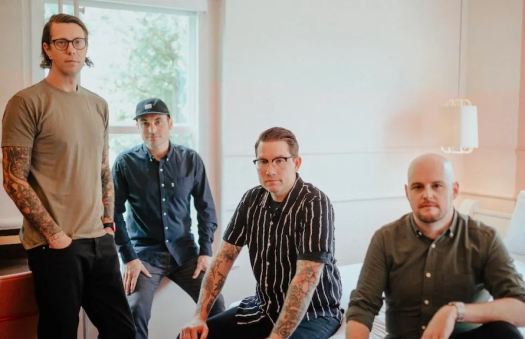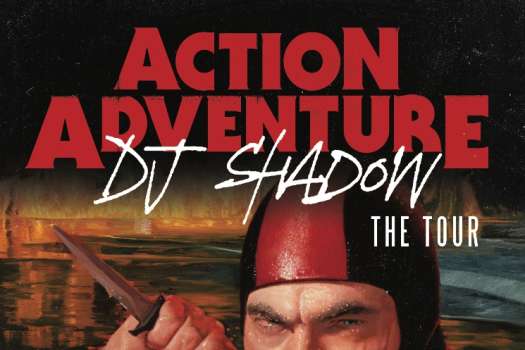Montreal's No Joy was formed just a year ago via a long distance friendship between Laura Lloyd and Jasamine White-Gluz, who at the time was living in Los Angeles. Putting their networking skills to good use, they befriended L.A.-based lo-fi sweethearts Best Coast and signed to their label, Brooklyn, NY's Mexican Summer. Now a four-piece, No Joy follow-up their self-titled seven-inch (produced by Graham Van Pelt of Miracle Fortress/Think About Life) with their debut full-length. Shrouded in reverb and fuzz, Ghost Blonde is a tempest of dissonance and melody, taking its cues from shoegaze and noise pop, but doing so with the rawness and backbone of a proper rock'n'roll band. "Hawaii," for instance, charges with the notion of Ron Asheton manning guitar for Lush and "You Girls Smoke Cigarettes?" unfetters with a squalling blast of hiss that gives off the disorienting sensation of a screwdriver to the ear. Lloyd and White-Gluz dually contribute vocals, but thanks to mixer Sune Rose Wagner (the Raveonettes), they're buried deep in the mix, sounding faraway and indecipherable within the feedback and din that conquer the opaque self-production. No Joy have done their homework on Ghost Blonde, establishing a sound that finds the perfect middle ground between obliterating and serene.
Jasamine, you were in Los Angeles at the time the two of you discussed forming No Joy. What were you doing down there?
White-Gluz: I was escaping the Montreal winter and orchestral pop bands. I think that put me in a very dark place and more or less set the tone for No Joy. Laura was in Montreal and also depressed about the winter and the death of her dog. After many heart-to-hearts we could no longer find the words to express our feelings of darkness and started writing songs that would translate this. The songs were written back and forth through e-mail, until I went back to Montreal for the holidays and we played out first show. Then I didn't go back.
The band formed just a year ago and already have an album out on one of the more respected indie labels out there. How would you describe the last year?
We had no plan when we started No Joy, just that we wanted to write music we like. That being said, we recorded the two songs and assumed no one would listen to our songs if we didn't release them for free, so we put them up for free download. Luckily for us, people liked the songs and we got to play some cool shows, which definitely helped people get to know us in Montreal over the winter/spring.
You only had two songs when you signed to the label. Those two songs aren't on the album. What made you leave those off? What is the songwriting process like for No Joy?
The songs on the seven-inch are recorded in a much different style; we actually did them in a studio. Unfortunately, we didn't have the opportunity to use a real studio for the recording of the full-length; we did it ourselves in our studio space. The quality of the sounds was too different to put on the same album. Also, the engineer deleted the master files of the songs we released on the seven-inch, so I guess it wasn't really an option after all!
You guys brought in Sune Rose Wagner to mix the album. He's known for using a lot of reverb, distortion and feedback on the Raveonettes albums. What did you want him to do with the record?
We asked him to do it because we like his production style; he has very similar tastes and definitely understood what we were going for sonically. He definitely understood what we meant when we said we wanted to sound like we were drowning on the record. I don't think Dr. Luke would agree, so we worked with Sune.
What made you decide to bury the vocals so deep in the mix?
Vocals are secondary in the songs. The main focus is the guitars and the sounds we can make with them. Vocals, we've always agreed, should be treated like another instrument: there to complement the songs, not make the songs. Everyone can interpret them differently.
You really made the guitars beefy and muscular. What was it about using reverb throughout the album?
There's more distortion and feedback than there is reverb on the guitars, which definitely makes them sound heavier. Also because we recorded these songs ourselves, no one limited the amount of guitar tracks we could use, so some songs have over ten tracks of the same thing in different tones that you can hear buried throughout. There was nothing clean about our recording process, including the lyrics.
What has adding two more members done to the dynamics of the band?
Initially the songwriting was Laura and I, but we always knew we would have to add a rhythm section since we're both guitarists. Originally we actually performed with two drummers, which was cool, but impossible to fit in the Subaru we attempted to tour in. Our bassist and drummer are very much integral to the band now.
You guys have played shows with Best Coast and La Sera, but also heavier acts like Coalesce and Harvey Milk. Has having that kind of flexibility helped in any way?
We like different kinds of music and that's not only reflected in our songs but the bands we have played with. We fall somewhere in between Coalesce and Best Coast and somehow it works for us, for now. It does help because we definitely appeal to different crowds, except the ska crowd. They don't like us... yet.
(Mexican Summer)Jasamine, you were in Los Angeles at the time the two of you discussed forming No Joy. What were you doing down there?
White-Gluz: I was escaping the Montreal winter and orchestral pop bands. I think that put me in a very dark place and more or less set the tone for No Joy. Laura was in Montreal and also depressed about the winter and the death of her dog. After many heart-to-hearts we could no longer find the words to express our feelings of darkness and started writing songs that would translate this. The songs were written back and forth through e-mail, until I went back to Montreal for the holidays and we played out first show. Then I didn't go back.
The band formed just a year ago and already have an album out on one of the more respected indie labels out there. How would you describe the last year?
We had no plan when we started No Joy, just that we wanted to write music we like. That being said, we recorded the two songs and assumed no one would listen to our songs if we didn't release them for free, so we put them up for free download. Luckily for us, people liked the songs and we got to play some cool shows, which definitely helped people get to know us in Montreal over the winter/spring.
You only had two songs when you signed to the label. Those two songs aren't on the album. What made you leave those off? What is the songwriting process like for No Joy?
The songs on the seven-inch are recorded in a much different style; we actually did them in a studio. Unfortunately, we didn't have the opportunity to use a real studio for the recording of the full-length; we did it ourselves in our studio space. The quality of the sounds was too different to put on the same album. Also, the engineer deleted the master files of the songs we released on the seven-inch, so I guess it wasn't really an option after all!
You guys brought in Sune Rose Wagner to mix the album. He's known for using a lot of reverb, distortion and feedback on the Raveonettes albums. What did you want him to do with the record?
We asked him to do it because we like his production style; he has very similar tastes and definitely understood what we were going for sonically. He definitely understood what we meant when we said we wanted to sound like we were drowning on the record. I don't think Dr. Luke would agree, so we worked with Sune.
What made you decide to bury the vocals so deep in the mix?
Vocals are secondary in the songs. The main focus is the guitars and the sounds we can make with them. Vocals, we've always agreed, should be treated like another instrument: there to complement the songs, not make the songs. Everyone can interpret them differently.
You really made the guitars beefy and muscular. What was it about using reverb throughout the album?
There's more distortion and feedback than there is reverb on the guitars, which definitely makes them sound heavier. Also because we recorded these songs ourselves, no one limited the amount of guitar tracks we could use, so some songs have over ten tracks of the same thing in different tones that you can hear buried throughout. There was nothing clean about our recording process, including the lyrics.
What has adding two more members done to the dynamics of the band?
Initially the songwriting was Laura and I, but we always knew we would have to add a rhythm section since we're both guitarists. Originally we actually performed with two drummers, which was cool, but impossible to fit in the Subaru we attempted to tour in. Our bassist and drummer are very much integral to the band now.
You guys have played shows with Best Coast and La Sera, but also heavier acts like Coalesce and Harvey Milk. Has having that kind of flexibility helped in any way?
We like different kinds of music and that's not only reflected in our songs but the bands we have played with. We fall somewhere in between Coalesce and Best Coast and somehow it works for us, for now. It does help because we definitely appeal to different crowds, except the ska crowd. They don't like us... yet.




